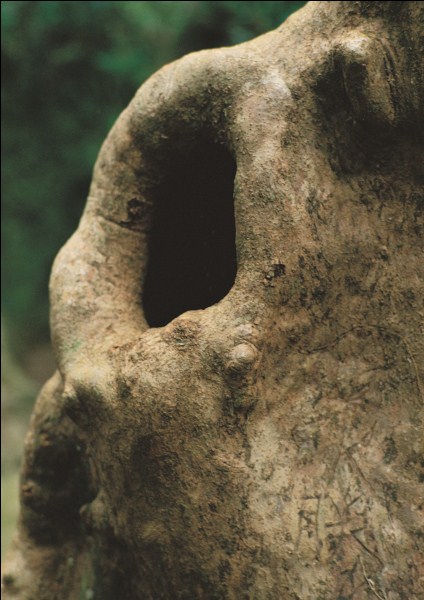 What is deluded pride?
What is deluded pride?
Deluded pride is quite simply a view of ourself that considers us to be more important or significant than we actually are. It causes us a lot of pain because when we are filled with pride we are vulnerable to the criticisms of others and to our own insecurities (indeed deluded pride may be seen as an attempt to mask our deeply held insecurities). It also prevents us from building healthy friendships and relationships where both parties are considered equals, rather than having one ‘top dog’ and one ‘underdog’.
The core causes of deluded pride
The two major cause of deluded pride are firstly to perceive ourselves as inherently separate from everyone else (as opposed to interconnected), and thensecondly to be caught up in feelings of inferiority. When we feel inferior to others, or when we feel that they threaten our self esteem we tend to overcompensate for the threat by developing deluded pride. If you watch the inner commentary going on in your mind at such times, you will see that it automatically starts coming up with reasons why that person is stupid, or inferior to you and also reasons why you (or your group) are superior to them.
Feelings of inferiority are so deeply embedded within the minds of us human beings that the deluded pride that we develop in order to compensate for it can come in many ways, some very insidious. The subtler manifestations of deluded pride are just as present in spiritual groups and institutions as secular ones.
Humility
One of the main solutions to pride is traditionally the practice of humility. However, many practitioners of humility unintentionally fall into the extreme of simply accepting their own feelings of inferiority as being reality, and thus rather than actually being humble, they are in reality simply staying in their comfort zone, which is simply feeling inferior to others.
Genuine humility I think is a mind that sees our self as no more important or significant than anyone elses, but also includes the caveat that we are also no less important than anyone else. Thus when a person with a lot of deluded pride comes into our life, or we need to stand up for ourselves in any way we are able to do so effectively without being inhibited by our false humility.
Three Types of Non-deluded Pride
You can take non-deluded pride in yourself and what you are or what you do. Indeed it is necessary to take non-deluded pride in what you do if you are going to fulfill your potential. To take a simple example a school teacher who is proud of her profession and the role she plays in helping her students is going to tend to be a good teacher. Without pride in what she does, inevitably the standard at which she does her job will drop.
In this sense you could say that non-deluded pride is very much about caring, caring about what you do, who you are and the effects that you have on your world.
With this in mind here are three types of non deluded pride
Pride in Our Abilities and Achievements
As shown with the example of the teacher above, someone who appreciates their own abilities and the things that they can achieve with them is going to fulfil their potential. We can have pride in what we do without considering ourselves inherently better or superior to others.
Pride in Our Humanity
To be human is to have the ability to go beyond the demands of our biological and socially constructed self and hold ourself to standards of caring, loving and acting skillfully and wisely beyond that which animals are capable (no offense to them!) I think you could safely say that most humans do not have enough non-deluded pride in their own humanity. If they did have such appropriate pride they would no doubt be many more people fulfilling their genuine human potential than their actually are!
Divine Pride
In Tibetan tantric practice (which I engaged in explicitly for a decade or so) there is a central practice called “divine pride” where you strongly imagine yourself as already being an enlightened deity. This Tibetan form is a relatively complex form of divine pride, but the essential divine pride that we can all cultivate is simply the recognition that we are all aspects of a single spiritual essence evolving in many varied and diverse ways within time and space.
Our outer form may be that of a single humble human, but the divine essence that flows through us is truly divine spirit-in action. One of the main goals of meditation practice is to learn to recognize this spiritual essence, and take non-deluded pride in it as our true Self or identity.
Final Thoughts
I suppose my main point in the above writing is that both deluded pride and non-deluded pride arise from the same fundamental emotional and mental energy, and that non-deluded pride plays a very important part in both our overall psychological wellbeing and the ongoing evolution of our consciousness. For it to play its role appropriately we need to liberate our pride from the delusion of inflated self importance and from the carousel of our habitual inferiority/superiority complexes. This is not easy, but it is most definitely worth it!
© Toby Ouvry 2012, you are welcome to use or share this article, but please cite Toby as the source and include reference to his website www.tobyouvry.com



 Meditation Workshop: An Introduction to Meditation From the Perspective of Tibetan Buddhism
Meditation Workshop: An Introduction to Meditation From the Perspective of Tibetan Buddhism
 Article of the Week:
Article of the Week:
 Article of the Week:
Article of the Week: Meditation Class 14th December:
Meditation Class 14th December: